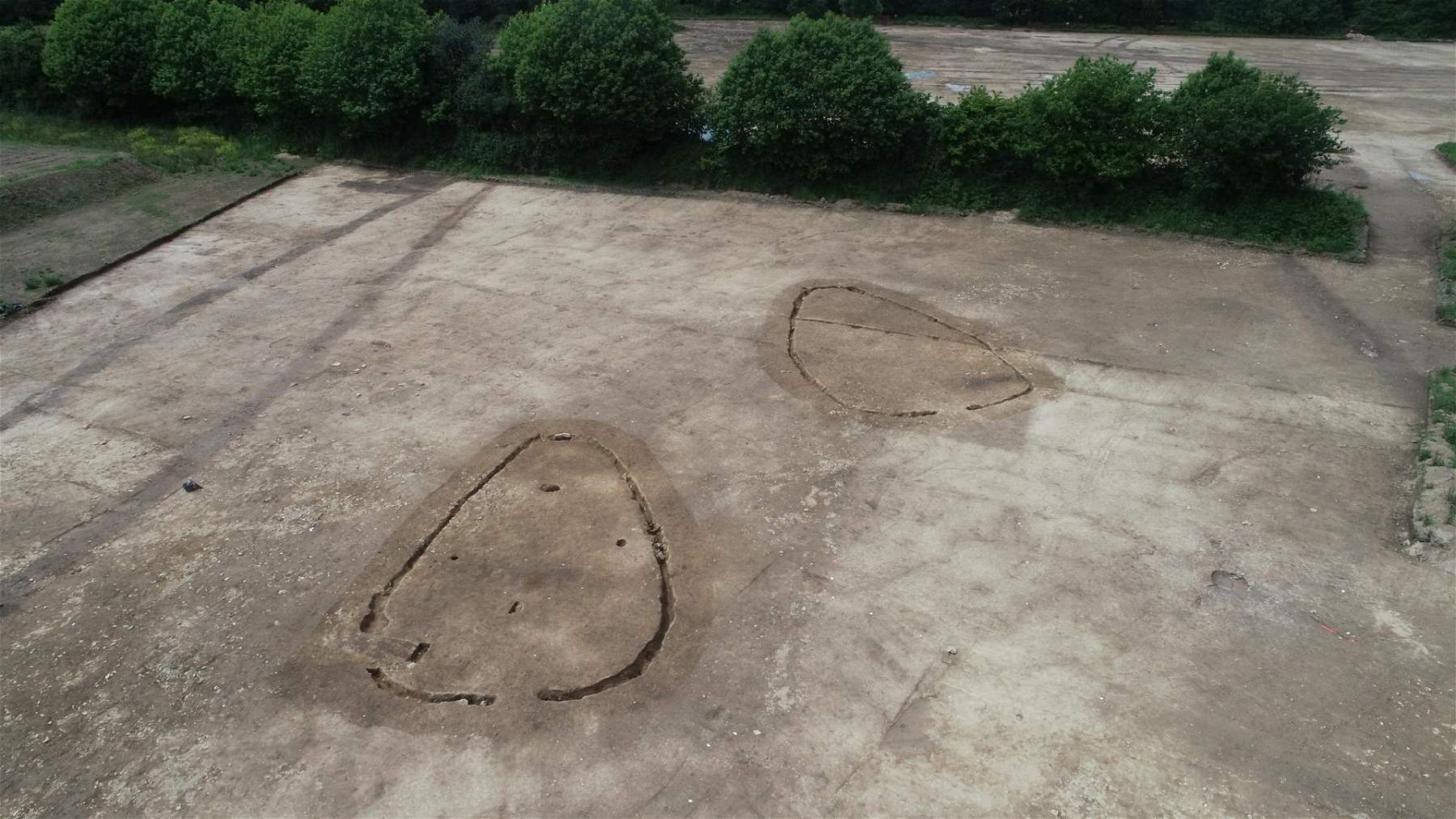Major archaeological discovery in France: found 4 buildings of bell-shaped culture
In France, in Concarneau (Brittany),INRAP, the National Institute for Research in Preventive Archaeology, has unearthed some important structures from the period of the “bell-shaped culture,” or the Late Copper Age (2,500-2,000 B.C.), so called because bell-shaped pottery vessels were widespread in the areas concerned during this period. This is a very important discovery because the bell-shaped period in France is very poorly documented, and the find therefore allows for a significant advance in knowledge on the subject.
The excavation, which started last March, had been prescribed by the Regional Directorate of Cultural Affairs of Brittany (a sort of French counterpart of our superintendencies) upstream of a private construction project that will lead to the construction of some buildings in the Keraorec area near Concarneau. The excavation yielded well-preserved traces of four buildings, each built in the shape of an almond, a typical feature of buildings of the bell-shaped culture, with the entrance always on the eastern side. On the foundation earthwork, contiguous wooden piles were installed to act as supports for the building: traces of this type of construction were found. In addition, the excavation also returned some earthen fragments, and on that basis scholars found that the buildings had been constructed using the torchis technique (i.e., a wooden framework filled with earthen impasto elements).
The campaniform buildings of Concarneau are organized into two distinct groups, separated from each other by a hundred meters, each formed by a pair of two buildings, of the same size, orientation and almost contiguous. For each pair, one of the buildings sees a domestic hearth in the center (an unprecedented discovery for this period) while the other lacks one, suggesting that the two buildings served different functions. The Concarneau excavation also unearthed numerous ceramic fragments, identified as the remains of objects used in daily life. This discovery is also unprecedented for the region, because until now only ceremonial pottery, generally related to a funerary context, was known. Stone elements, particularly fragments of granite millstones, were also collected within these constructions.
“The discovery of Concarneau,” INRAP points out, “allows for real progress because knowledge of this period is very fragmentary. In France, only 12 archaeological sites have allowed the study of bell-shaped constructions of this type (first brought to light in 2007), and each of these sites has returned one to three buildings, in an often partial state of preservation. Ongoing research will lead to comparative studies and supplement existing information. It should be noted that all sites are located near the Atlantic coast and mainly in Brittany (10 out of 12 sites).”
Pictured are the buildings recorded as “5” and “6.”
 |
| Major archaeological discovery in France: found 4 buildings of bell-shaped culture |
Warning: the translation into English of the original Italian article was created using automatic tools. We undertake to review all articles, but we do not guarantee the total absence of inaccuracies in the translation due to the program. You can find the original by clicking on the ITA button. If you find any mistake,please contact us.




























